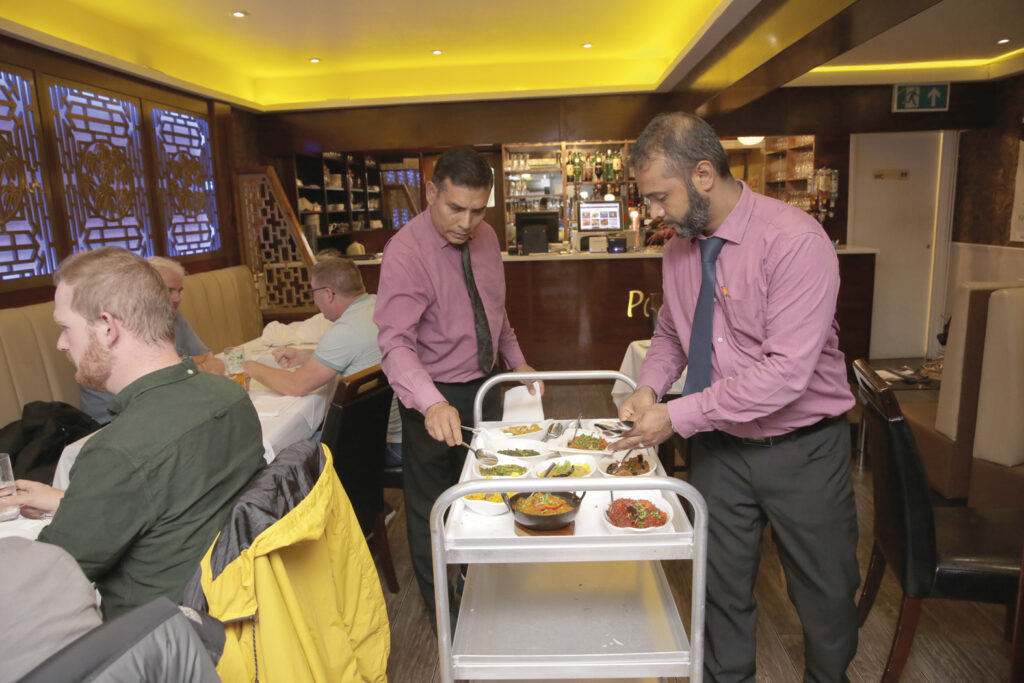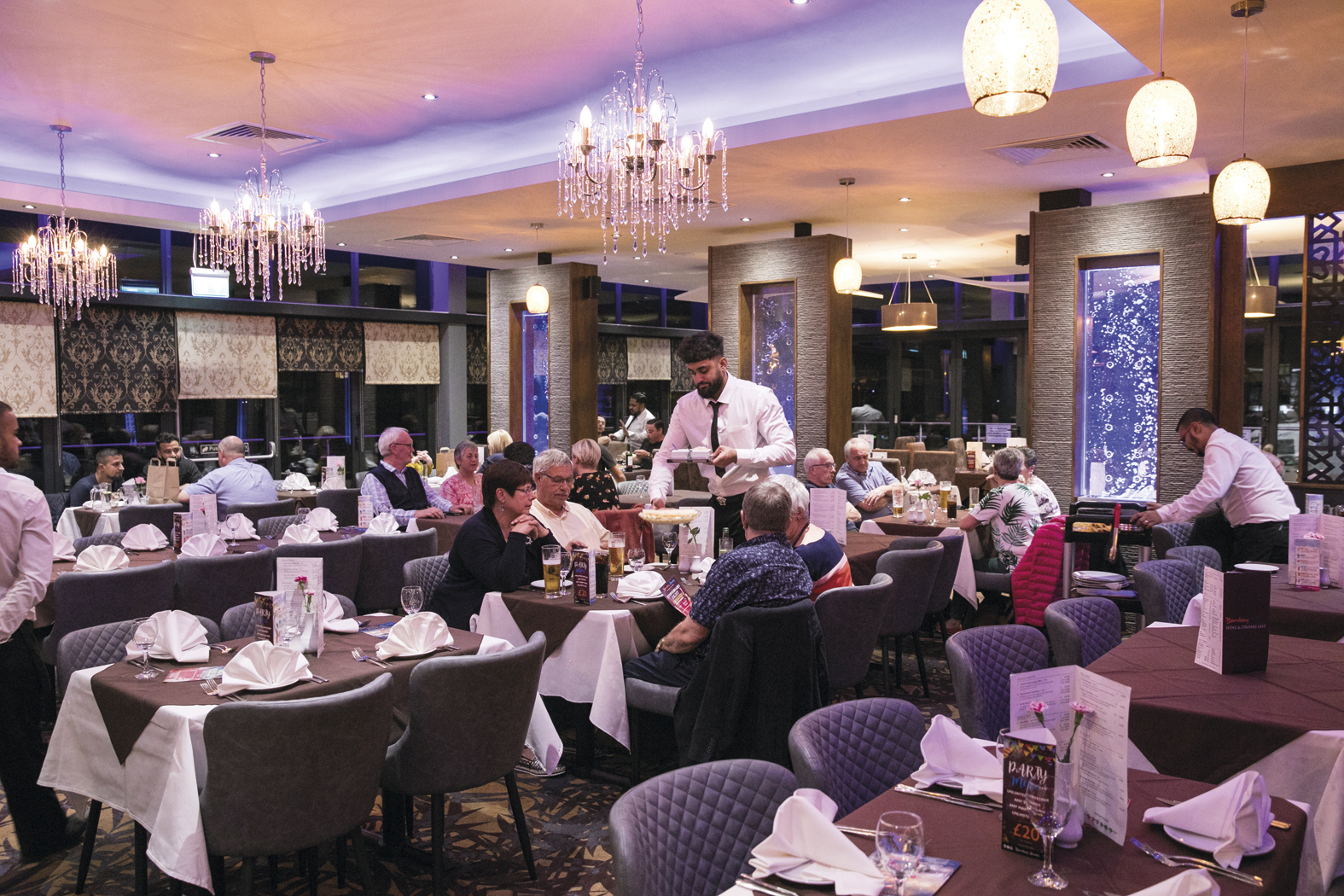By Helen Salter
For many restaurant-goers, good service is one of — if not the — main draw for going out to eat. Old-school, interactive experiences between waiter and customer are just one way a restaurant can bolster its reputation, with restaurateurs taking pride in maintaining a service which can lead to regional and national recognition. However, in the face of the pandemic, the restaurant industry has had no choice but to implement many operational changes, altering the general state of dining, which we know and love.
One of the most prominent changes restaurants have seen this year is the shift from face-to-face service to QR codes and app ordering systems. Restaurant technology of this sort has been around for many years —the most obvious partaker being pub juggernaut Wetherspoons —though it’s been this year which has understandably seen a huge uptake in mobile ordering and paying systems: Wi5, a web-based mobile order & pay solution for hospitality, reported a 500% increase in sign-ups, with a 2000% per cent increase in customer-generated revenue.
Nevertheless, with the influx of QR codes and app ordering systems — not to mention safety measures such as mandatory face masks and visors for staff — the very ground of what constitutes restaurant service starts to shake. So, how are restaurateurs and diners responding to this shift in dining – does the current emphasis on tech offer a multitude of benefits, or, does it erode relationships between staff and customer, indicating a potentially devastating impact on a sector already struggling to stay afloat?
A positive shift for restaurants
“It’s a positive shift as long as it allows restaurants who want to stay open to stay open and encourages customers who want to eat out to eat out, and do it safely,” says London-based food and drink writer Lucas Oakeley. Indeed, implementing mobile technology can offer a business a number of advantages, such as monitoring customer demand, track and trace functionality, increase in safety and hygiene and giving the customer greater control. In a research study of 1000 diners by digital ordering platform Ordamo, technology solutions such as contactless payment came third in customer’s list of priorities, with 67% of respondents feeling it was safer to order from their phone rather than restaurant staff.
But do these safety advantages outweigh the social cost of losing face-to-face interaction? Mr Mashukur Rahman, who runs Indian restaurant Jhaal in Colchester, still provides a service to his elderly customers: “We provide them with the takeaway menu, because some have said they don’t own a smartphone. I like talking to customers face-to-face – I’m a local guy and 95% of our customers are regular. So, we like having a chat with them. It is a bit different now – people are trying to eat and go home rather than interrupting, so it has changed.”
“We do however have QR codes for the younger generation – it’s so easy for them to scan and take an order,” says Mashukur. “But if you go to my different level of customer – who will come here with their wife, perhaps 50 years old, will want to talk to the owners face-to-face – and this is where the problem is. So, we’re accommodating to both.”
While the central point of newly implemented tech is to help staff avoid close contact with customers — as well as preventing crowds and physical queues from gathering — it’s apparent there is resistance to its role, not only from staff but from diners, too. “I think I’m always going to prefer looking at physical menus and interacting with a real person rather than a phone screen because that’s part of the appeal of going to a restaurant for me,” says Lucas. “It’s being somewhere I can escape from the many, many screens in my life.” For lots of restaurant-goers, entering an establishment is a phone-free haven, a momentary slice of respite where phones are off the table and real-life conversations flourish. Those hoping for a tech-free evening are easily disgruntled, then, by the barriers presented with yet another app download, (provided they own a smartphone), potentially resulting in a dampened dining experience.

“Unpractical and too complicated to be used effectively”
“Face-to-face service is crucial for judging guest experience and making all visitors feel welcome – there are so many small details that are only conveyed by direct interaction between waiter and guest,” says the manager of one Soho restaurant, where waiters continue to serve customers. “It allows waiters to set the pace of an evening, and guides diners through any questions they might have. It’s a crucial feature of restaurant service: for the waiting staff to be present, and helpful, but not over-bearing,” the manager says.
“On the whole, the influx of technology in restaurants is a positive change, however in some cases it can become unpractical and too complicated to be used effectively. It’s also increasingly important for all team members to be confident with new tech and systems, which can alienate some workers,” the manager says. “I think the uptake in technology involved in hospitality venues will certainly change what we consider ‘traditional’ restaurant service but can never replace it. The importance of waiters in restaurant settings won’t be overlooked.”
It may be argued, crucially, that there is a time and place for a tech-driven dining experience: “If I’m looking for a quick lunch then I’m totally OK with the QR codes and apps – McDonald’s had already got that sort of ordering nailed pre-Covid and there are definitely benefits to it,” says Lucas. “Plus, if staff aren’t comfortable coming to tables and taking orders, then I’d rather they’re not forced to do that just for my sake!”
Data protection and breaches
Though many tech solutions such as Wi5 require no app downloads or registration, allowing a more frictionless experience, they do present numerous data protection challenges. Before re-opening on July 4th, the government asked all restaurants to collect personal data to assist in track and trace, allowing businesses to store potentially sensitive data. This means commercial exploitation, state databases and data breaches are all at play, posing greater privacy risks for customers.
Ultimately, when it comes to health and safety, reducing physical contact in the casual dining arena remains key to staying in line with government guidelines. Diner reassurance at a time when anxiety levels are high is paramount, not to mention the economic challenges many of us face in tandem. Most customer-facing technology — digital menus, contact-free orders and payment solutions — are specifically designed to shorten the time it takes for customers to receive and pay for the bill. Indeed, reducing time spent indoors is preferable in this climate and may, in turn, enhance customer confidence; Prask Sutton, chief executive and founder of Wi5, claims there’s evidence showing businesses could save around 17 minutes per order.
This smartphone-driven environment fails to consider, however, how unpredictable phones act when we need them most, owing to a shaky Internet connection, low storage and a low battery on the brink. “I’ve had a few issues; I don’t have data on my phone, so I rely on Wi-Fi whenever I’m out and about. Frantically attempting to connect to the Internet while scanning a QR code as a line of disgruntled people forms behind you can be a bit of a pain sometimes,” says Lucas. “But that discomfort is only momentary, and I wouldn’t say it detracts from the overall experience.”
Naturally, business owners ought to be eager to fully embrace technology should it bolster a beleaguered sector; any implementable measures which increase sales at a time when profit margin are slim and maintenance costs are rising are welcome. But how easy are they to implement, and is it cost-effective? Reports claim tech can cost up to £1000 to set up, with the cost of processing payments more than double what it is with your standard credit card provider. If you add these costs to the stress of operating at reduced capacity, and it’s clear to see the strain restaurants are under.

What is the future of restaurant service?
First-class service lies in the spirit of hospitality, and for many shapes not only a restaurant’s reputation but also the reason why so many want to work in the industry. So, what does the future look like for the sector? “This is the way we of doing business now. I believe it’s the new trend, we’ve said goodbyes to menus,” says Mashukur. “My future plan is every table will have an iPad, and from that you can order your food and pay as well. The only thing we’ll provide is the food and that’s how it’s going to be.
“I’m happy as an owner, because some of the staff, not matter how good they are, they make mistakes. The kids are different – they’re here to eat their food and go – they’re not interested in hearing your life stories, so for them it’s the way forward. It’s a generational argument and it’s going to go that way I think.”
“In business, if you want to go forward you have to keep up with the trends, otherwise you’ll be out of the market,” says Mashukur.
“I like talking to my elderly customers, they know me by name, and I know them by name, most of them don’t need the menu because I know the order, but the younger generation, they love using tech. I use a smartphone I don’t deny that, however when I go to a restaurant, I want to see the menu, but it’s not going to be there anymore.”
Though technology offers a safer, cleaner alternative to sharing menus and social interaction, the foundations of the restaurant experience go under threat. Will this new-found appetite for mobile tech last longer than the pandemic, and is the digital shift a sustainable one? “I hate to be a pessimist but whether or not it’s a viable long-term solution depends on what restaurants are still left after all ‘this’ is over,” says Lucas. “I’d be lying if I said the prospect of a world filled with restaurants that resemble McDonald’s and Wetherspoons wasn’t utterly depressing.”
With countless independents unable to introduce all of these digital measures, as well as the hundreds of owners smacked with further restrictions and the reality of a second national lockdown, the already ailing sector faces a perilous winter ahead – with jobs hanging in the balance.
Whether the future of restaurants resembles a technology-driven one, free of the old-school service between staff and customer, is not entirely up to restaurant-goers and owners, says Lucas: “I worry that by making these restrictions necessary, we’ll be phasing out a great deal of businesses and forcing them out of a dining landscape that they’re integral to. The government needs to work harder to protect those people and their businesses. Because restaurants might well survive but I’m not sure if they’ll be the sort of restaurants I’ll actually want to go to.”




